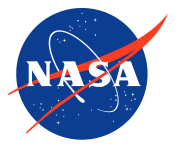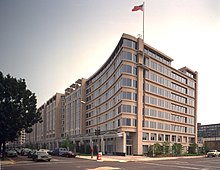NASA's Establishment and Early Programs
- NASA was established in 1958, succeeding the National Advisory Committee for Aeronautics (NACA).
- NACA was created in 1915 to support aeronautical research and development.
- NACA conducted research for the U.S. Air Force, Navy, and civil aviation sector.
- NACA's interest in space grew out of its rocketry program.
- NASA absorbed NACA's employees and research laboratories.
- Congress created the Aviation Section of the U.S. Army Signal Corps in 1914 to regain American leadership in aviation.
- NACA was established in 1915 to foster aeronautical research and development.
- NACA developed and tested the Bell X-1 in a joint program with the U.S. Air Force.
- NACA's rocketry program at the Pilotless Aircraft Research Division led to an interest in space.
- NASA was established on July 29, 1958, with the signing of the National Aeronautics and Space Act.
Human Spaceflight and Moon Landing
- Plans for human spaceflight began with the Air Force's Man in Space Soonest and the Army's Project Adam.
- NASA established the Space Task Group to manage Project Mercury.
- Alan Shepard became the first American in space with a suborbital flight in Freedom 7.
- John Glenn conducted NASA's first orbital spaceflight in Friendship 7.
- The X-15 aircraft served as a testbed for Apollo program technologies and hypersonic flight.
- President Kennedy charged NASA with landing an American on the Moon by the end of the 1960s.
- James E. Webb was installed as NASA administrator to achieve this goal.
- President Kennedy declared the goal in his Urgent National Needs speech to Congress in 1961.
- The Gemini program conducted orbital rendezvous and docking missions.
- The Apollo program successfully landed astronauts on the Moon with the Apollo 11 mission.
Current Missions and Research
- NASA supports the International Space Station.
- NASA is developing the Orion spacecraft and the Space Launch System for the Artemis program.
- NASA's science focuses on understanding Earth through the Earth Observing System.
- NASA explores the Solar System with robotic spacecraft like New Horizons and Perseverance.
- NASA conducts astrophysics research with telescopes like the James Webb Space Telescope.
Apollo Program and Space Telescopes
- President Kennedy protected NASA's budget, with 50% going to human spaceflight.
- At its height, 1 out of 20 Americans worked on the Apollo Program.
- Major General Samuel C. Phillips directed the Apollo Program.
- Wernher von Braun led the development of the Saturn V rocket.
- North American Aviation built the Apollo spacecraft, while Grumman built the Lunar Module.
- Compton Gamma Ray Observatory, Chandra X-ray Observatory, Spitzer Space Telescope, Cosmic Background Explorer, and Wilkinson Microwave Anisotropy Probe are space telescopes launched by NASA.
Space Stations and International Collaboration
- Skylab, launched in 1973, was NASA's first space station.
- It repurposed Apollo and Saturn hardware, but was decommissioned in 1974.
- The Apollo-Soyuz mission in 1975 was the first international spaceflight.
- A U.S. Apollo spacecraft docked with a Soviet Soyuz capsule.
- It was also the last flight of the Apollo capsule.
- The International Space Station (ISS) is a collaboration with multiple countries.
- The United States built and launched the majority of the ISS, while other countries contributed components.
- Costs exceeded the budget, and funds had to be transferred from other programs to sustain the station.
- The total cost of the station amounted to $150 billion, with the United States covering two-thirds of the expenses.
The National Aeronautics and Space Administration (NASA /ˈnæsə/) is an independent agency of the U.S. federal government responsible for the civil space program, aeronautics research, and space research. Established in 1958, NASA succeeded the National Advisory Committee for Aeronautics (NACA) to give the U.S. space development effort a distinctly civilian orientation, emphasizing peaceful applications in space science. NASA has since led most American space exploration, including Project Mercury, Project Gemini, the 1968–1972 Apollo Moon landing missions, the Skylab space station, and the Space Shuttle. NASA currently supports the International Space Station and oversees the development of the Orion spacecraft and the Space Launch System for the crewed lunar Artemis program, the Commercial Crew spacecraft, and the planned Lunar Gateway space station.
 | |
 | |
| Agency overview | |
|---|---|
| Abbreviation | NASA |
| Formed | July 29, 1958 |
| Preceding agency |
|
| Type | Space agency Aeronautics research agency |
| Jurisdiction | United States Federal Government |
| Headquarters | Washington, D.C. 38°52′59″N 77°0′59″W / 38.88306°N 77.01639°W |
| Bill Nelson | |
| Deputy Administrator | Pamela Melroy |
| Primary spaceports | |
| Employees | 17,960 (2022) |
| Annual budget | |
| Website | www |
NASA's science is focused on better understanding Earth through the Earth Observing System; advancing heliophysics through the efforts of the Science Mission Directorate's Heliophysics Research Program; exploring bodies throughout the Solar System with advanced robotic spacecraft such as New Horizons and planetary rovers such as Perseverance; and researching astrophysics topics, such as the Big Bang, through the James Webb Space Telescope, the Great Observatories and associated programs. NASA's Launch Services Program provides oversight of launch operations and countdown management for its uncrewed launches.